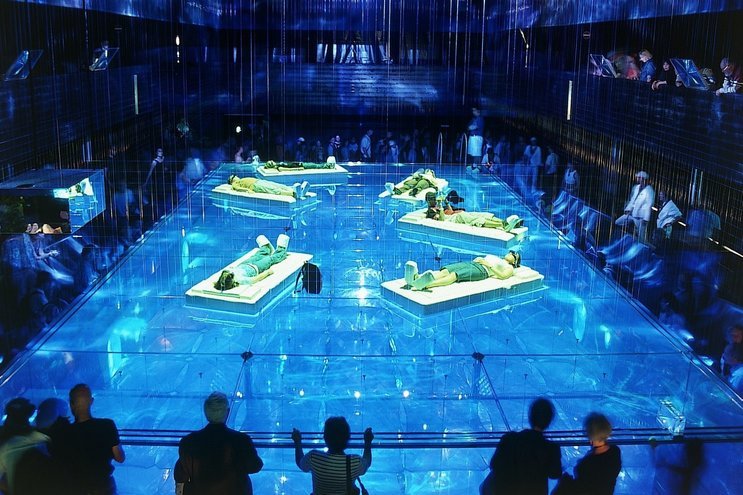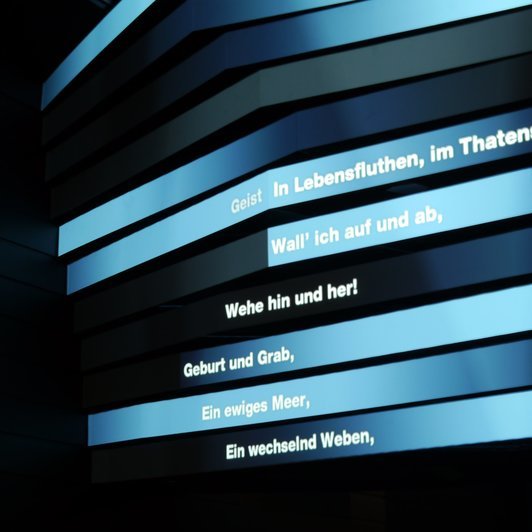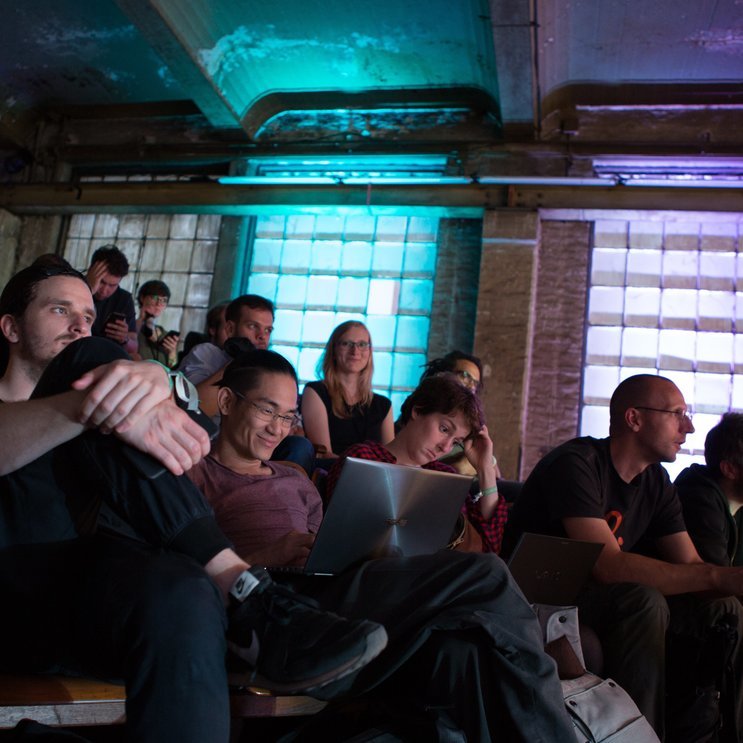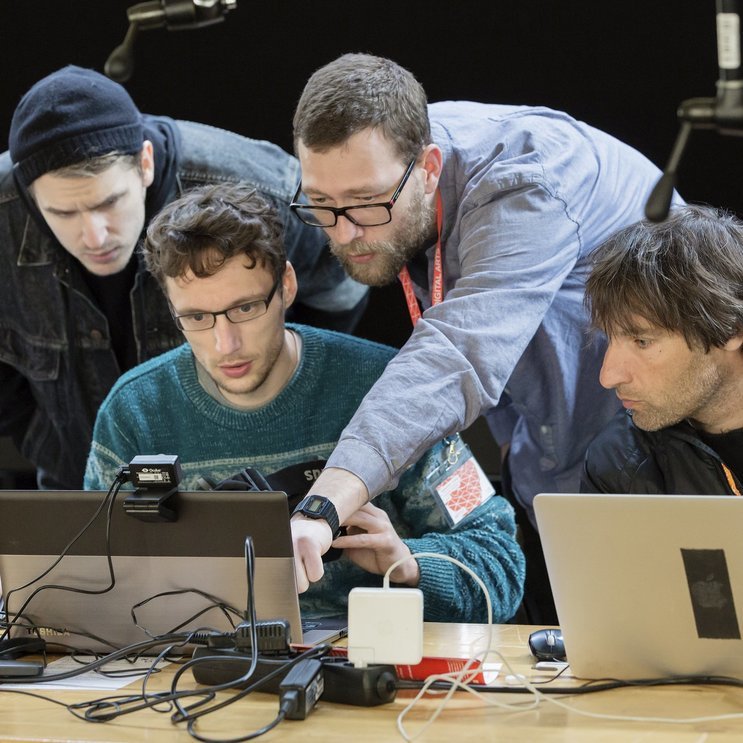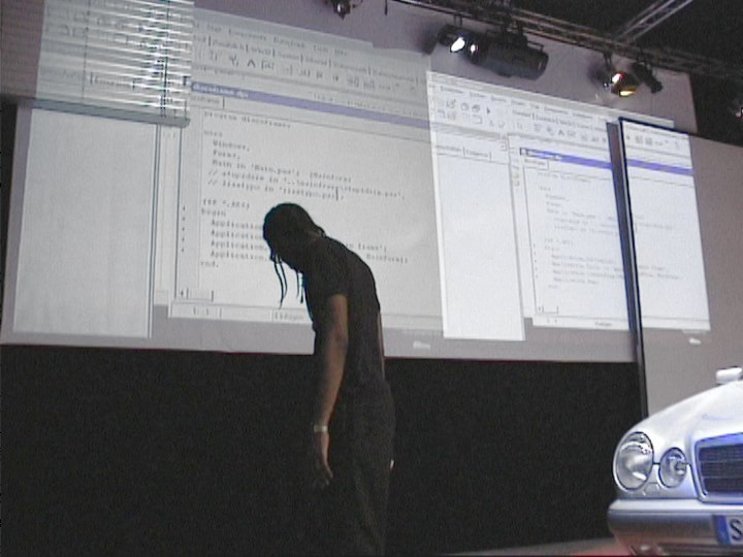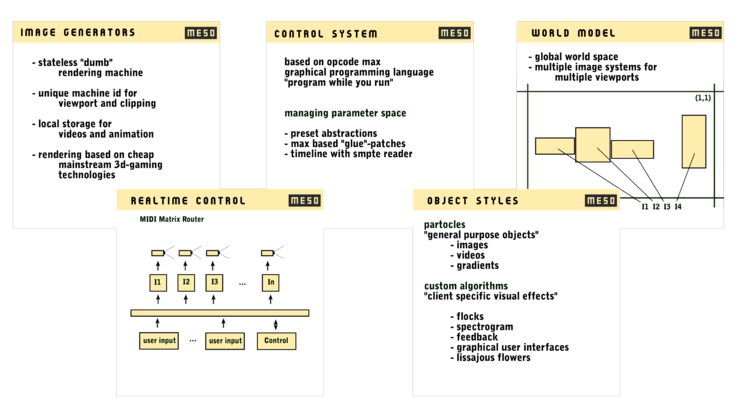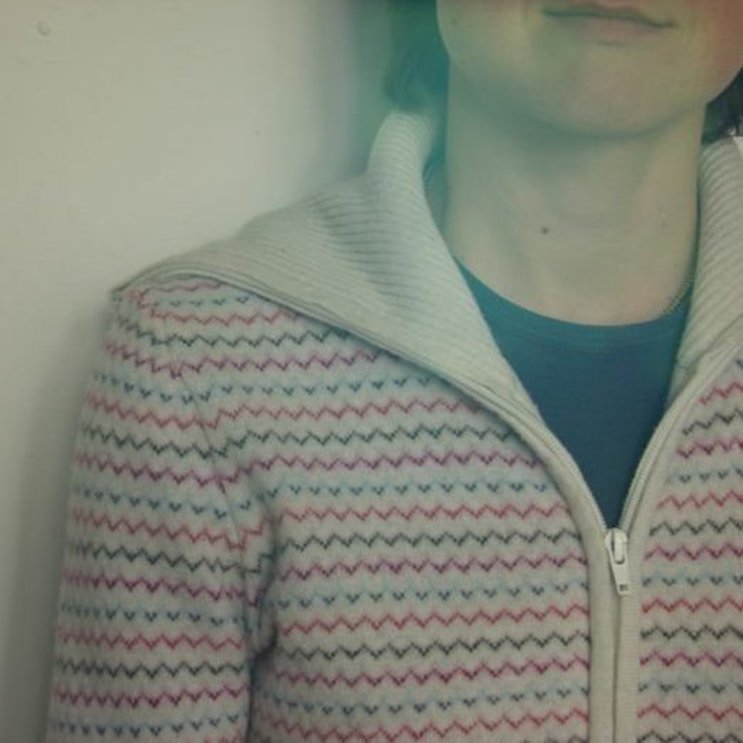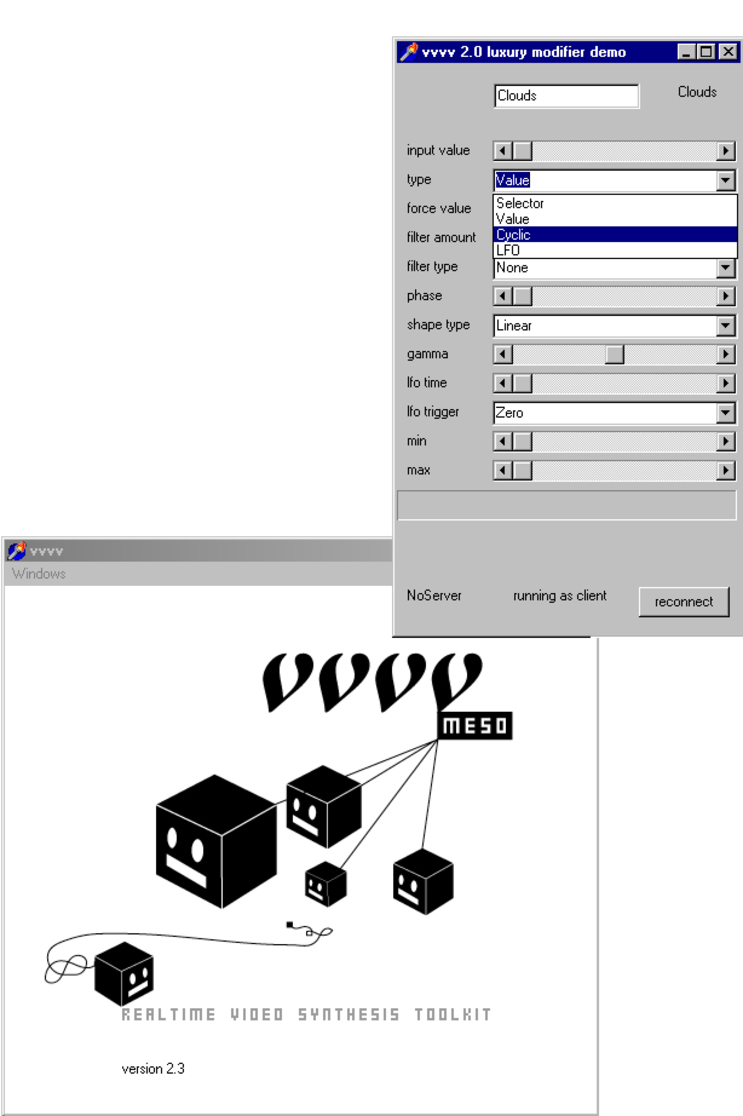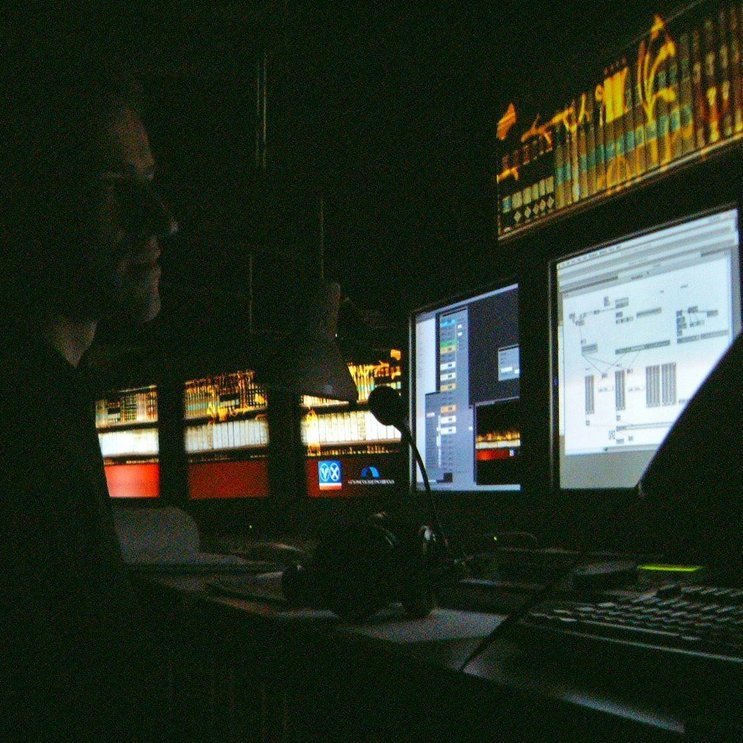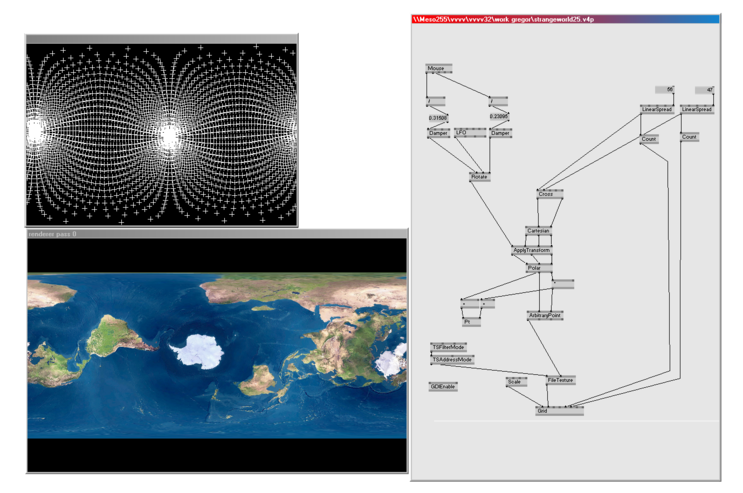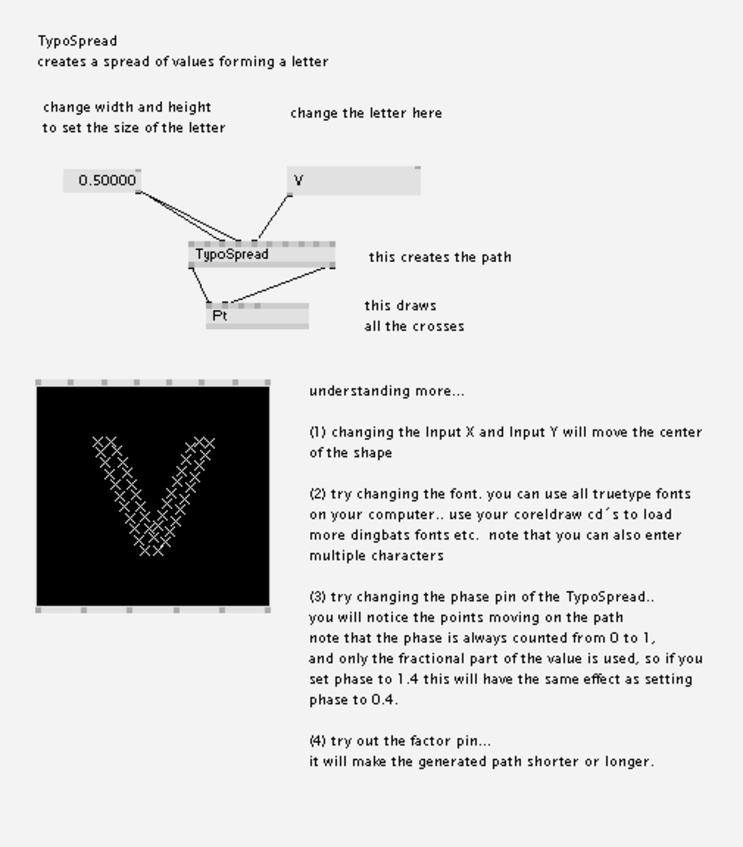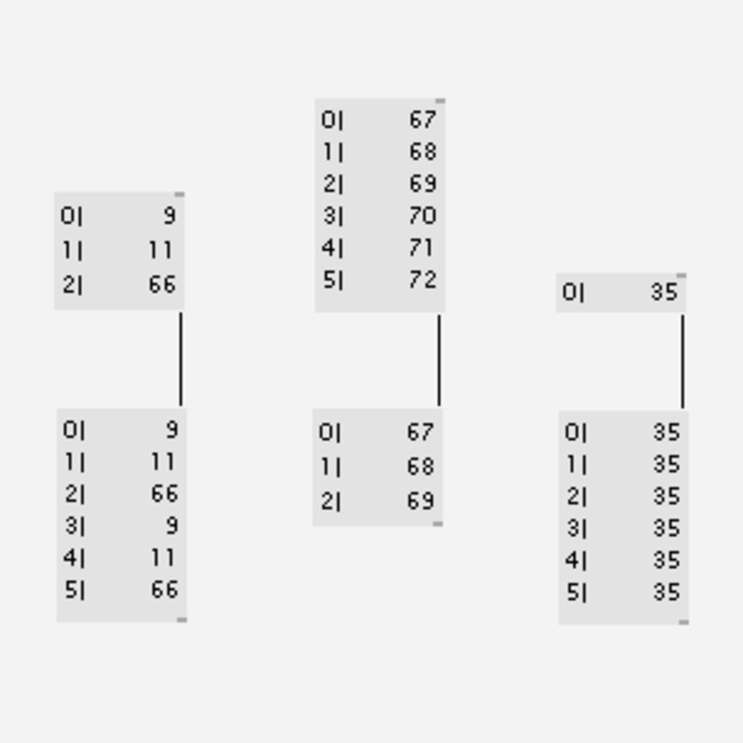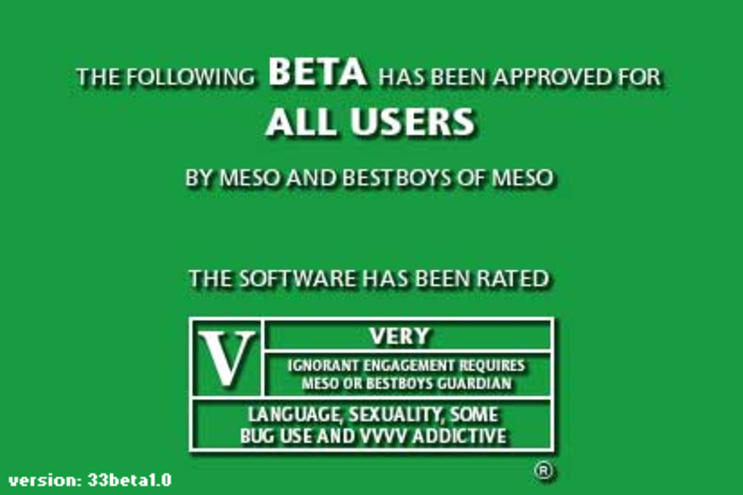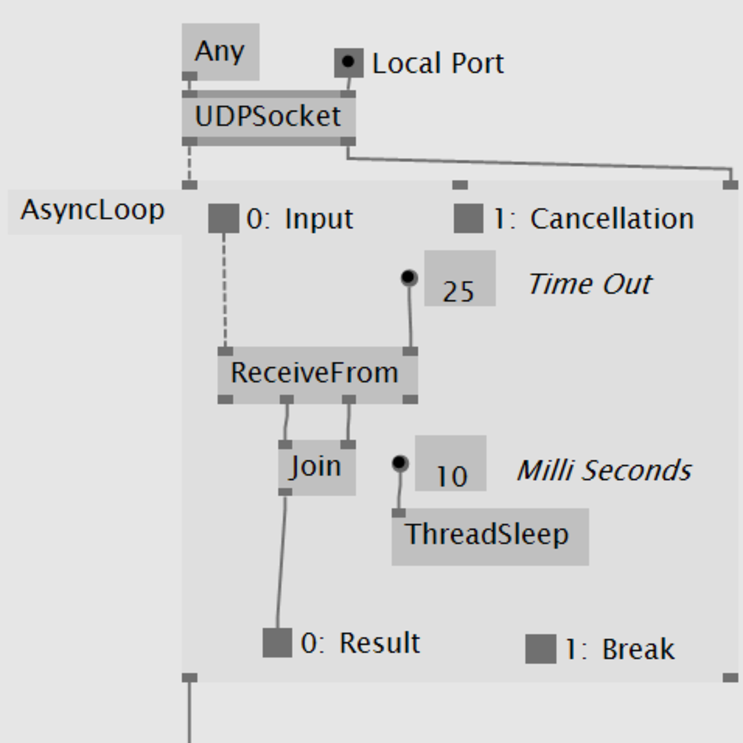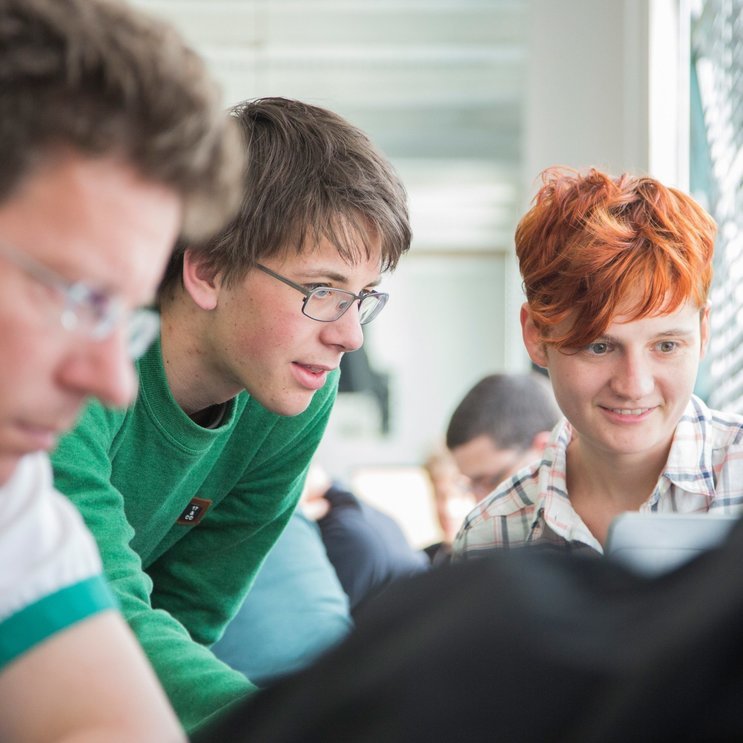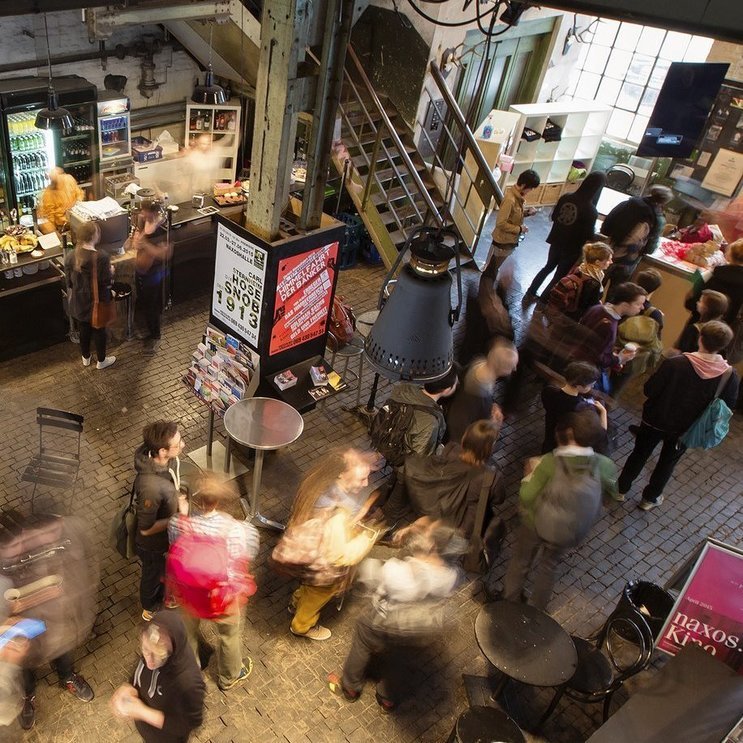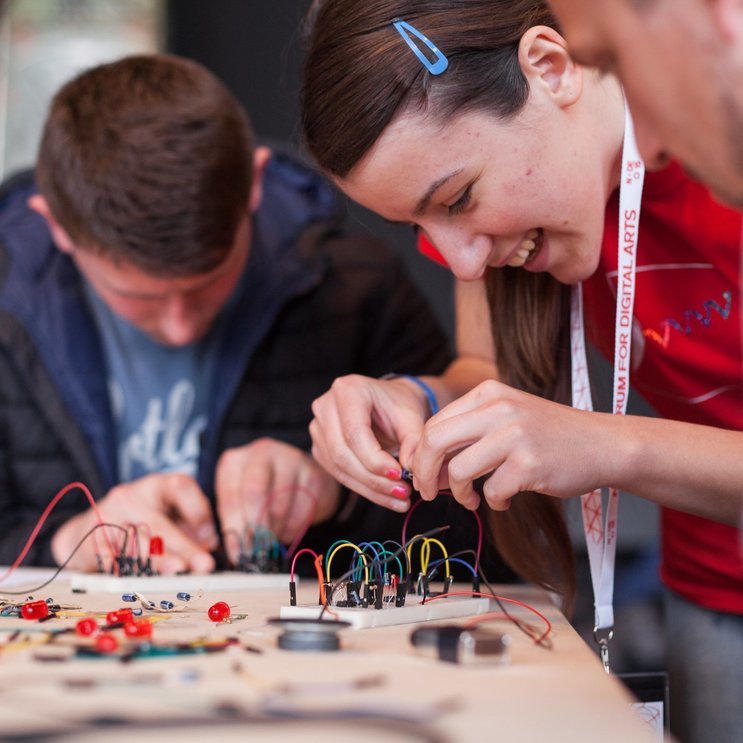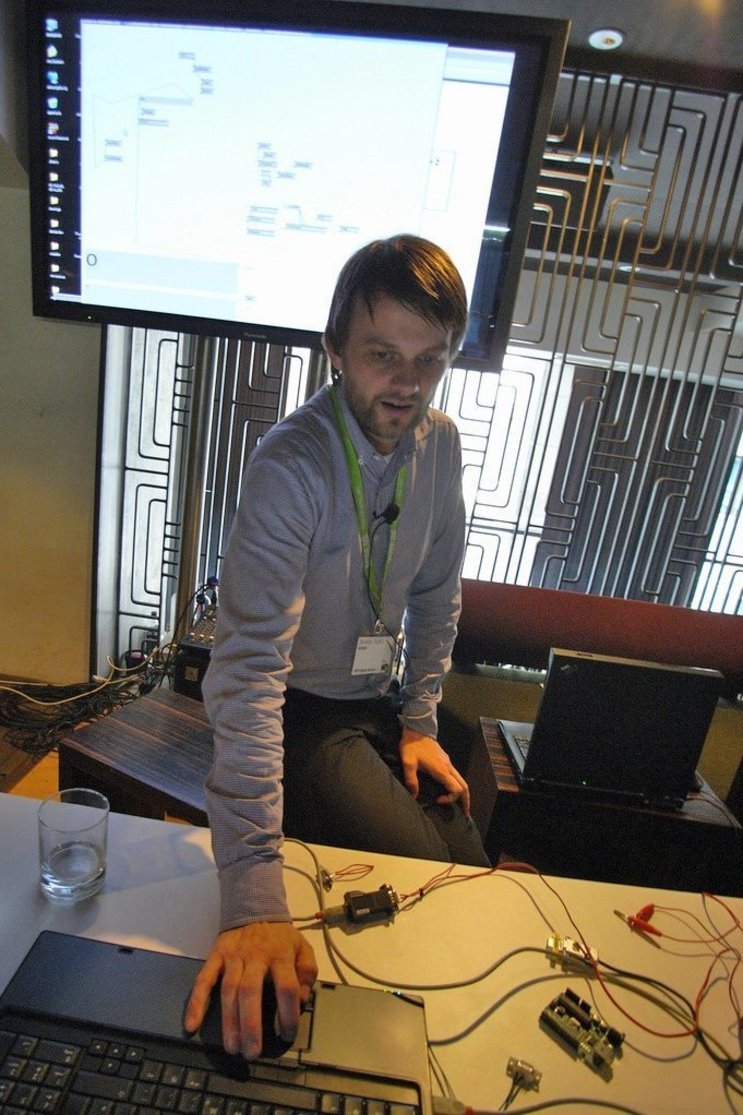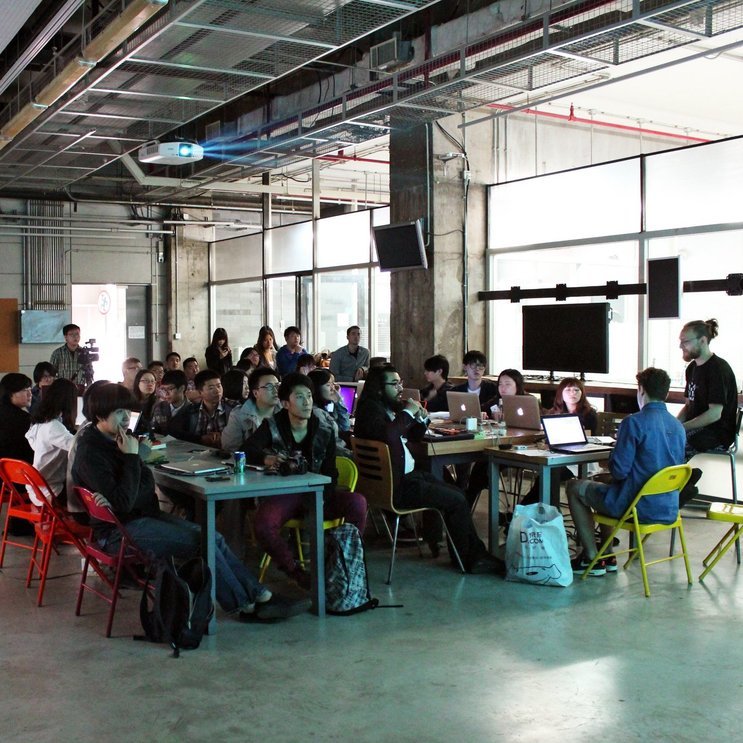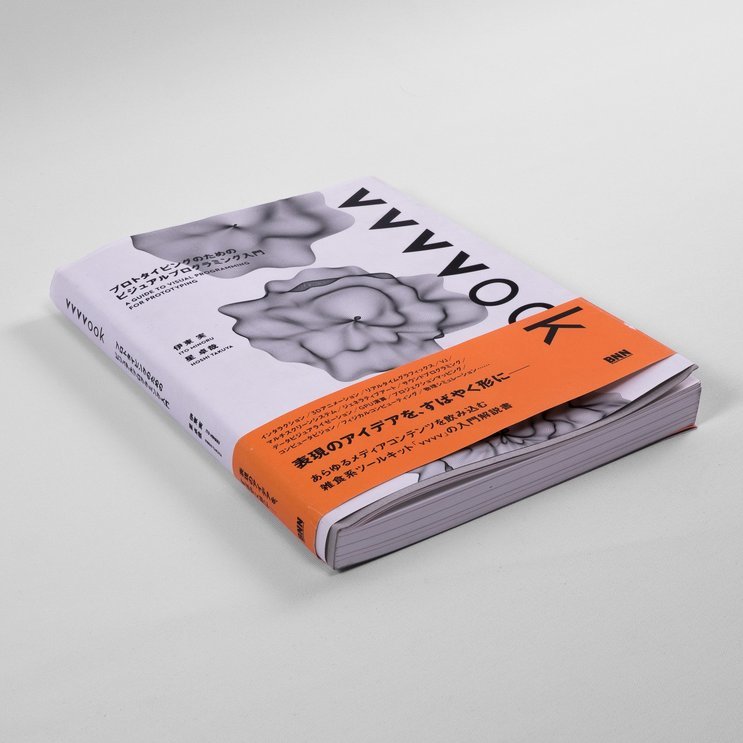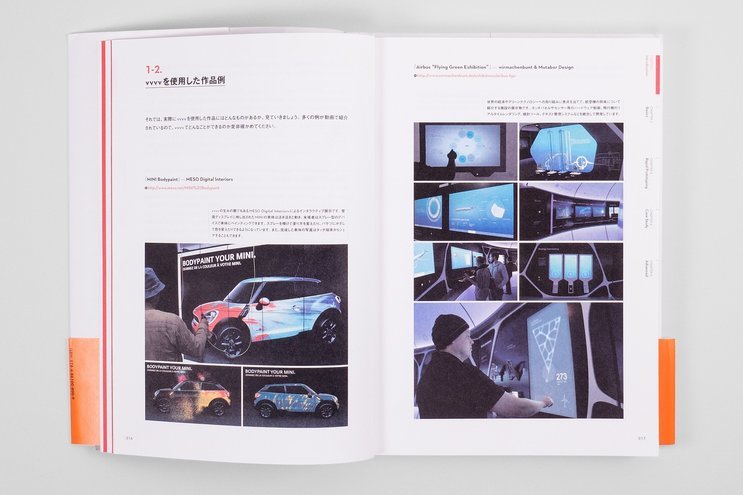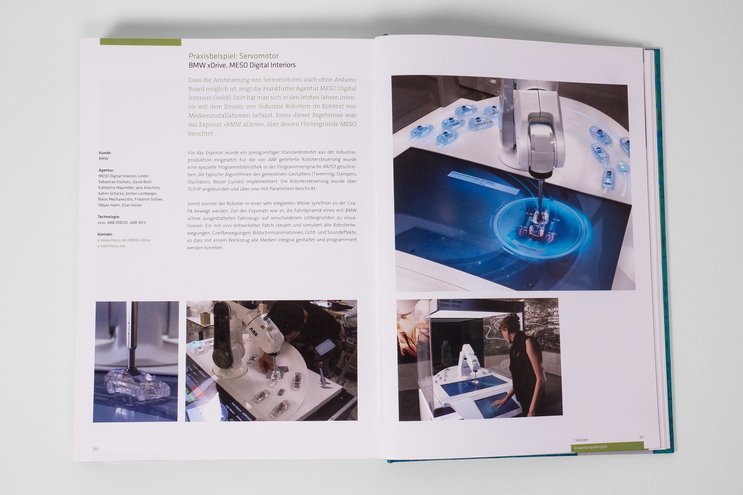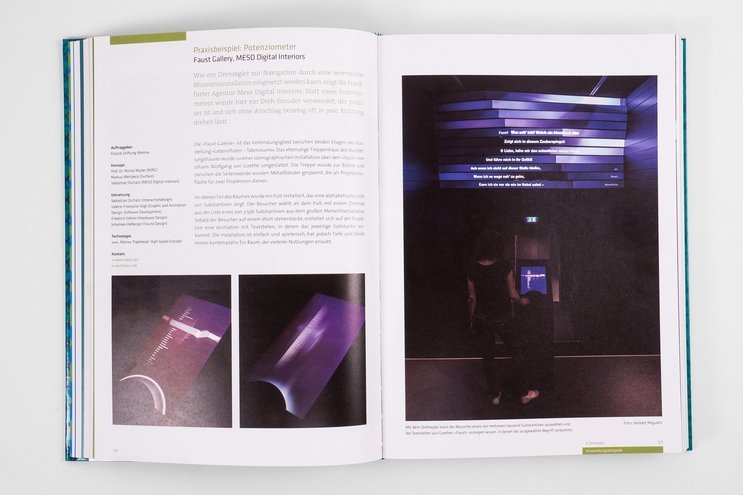The flow of creative expression: Paving the way for vvvv
Initially developed by MESO as an in-house tool to create real-time media installations, vvvv amassed a global community that continuously develops the visual programming software further. MESO, a key driver for avant-garde projects, produces many innovative installations with vvvv and engages in a mutually beneficial relationship with the creative software developers.
Inventive software engineering
Creating a new programming language from scratch
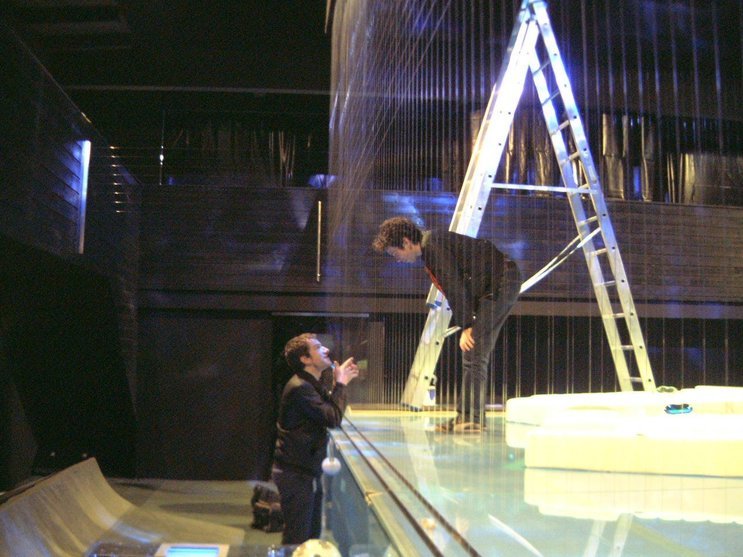
After recognizing the outstanding performance of affordable gaming graphic cards in 1998, a team of transdisiciplinary thinkers realized that the so-called multimedia software available (Opcode Max, Macromedia Director, Flash, etc.) strictly confined the possibilities of creative expression.
A unique mix of computer scientists and designers based at MESO wanted to outpace the obvious shortcomings of available software by designing a tool that allowed for radical high performance and rapid development, enabling users to use generative design to create innovative solutions.
In-depth software engineering skills, playful experimentation, as well as a deep understanding of the design possibilities of 3D accelerated graphic cards led to the very first draft of vvvv. What followed was a concentrated process of five years of in-house programming, which formed the cornerstone of a visual programming language that would later captivate programmers and designers worldwide.
The Cyberhelvetia pavilion in Biel during the Swiss Expo 2002 was one of the early projects that required use of vvvv as a tool for developing, designing, and testing complex immersive experiences.
The gaming industry is producing technologies that allow for complex visuals and sounds, content on the web is increasing, yet the possibilities for designers remain the same.

Visual programming paradigm
Being able to program in real-time and produce complex reactive media environments while operating on a graphical interface was the challenge set by the team of early vvvv developers Sebastian Oschatz, Max Wolf, Sebastian Gregor, and Joreg.
Today, use of vvvv has spread worldwide and it is a widely-used professional tool from VJ-sets to product prototypes, from artistic projects to award-winning automotive presentations on international trade fairs. Over the past decade, design as well as art affiliated disciplines have profited from an extended repertoire of digital tools and rising technologies, with vvvv being one of the trendsetters in the field of creative coding. This is due in part to its graphical interface, which makes it appealing for designers who are used to iterative solutions.
Supporting the vvvv community
Exchanging and contributing resources
The vvvv group first met during MESO’s Explorer Program. The Explorer Program still continues today and is a place for curious minds, transdisciplinary ambitions, and anyone who is enthusiastic about working with digital technology.

Joreg and Gregsn, founders of the vvvv group, were among our interns. After successful years as MESO’s “best boys”, they initiated Praxis Berlin to continually work on improving vvvv.
MESO’s Explorer Program is a talent pool: many of our interns have finished their diploma or thesis as part of their internship; Ingolf Heinsch, for example, graduated by implementing the very first vvvv timeliner.
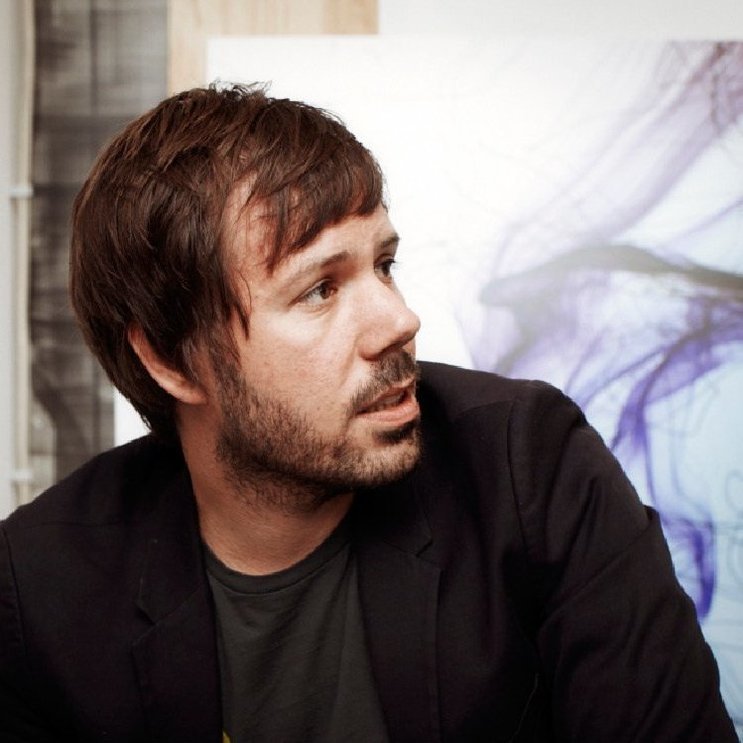
Being able to touch and tweak the code, control hardware, and space and communications in real-time has opened a new horizon for my creative work as an artist as well as for commercial projects.
NODE Forum for Digital Arts is vvvv’s “real-life” platform for informational interexchange, which has by now grown into one of Europe’s biggest media arts festivals. The idea for the very first NODE Forum also has its origins at MESO, as a former employee David Brüll initiated the project. Even today, we regularly meet up with international, creative talents and contribute to talks, workshops, and other formats.
Early in-house development
the kick off for a global community
1998
Recognizing the need for a new tool
Compile – wait, no – flow: An eye opener and motivation to break fresh grounds!
Live performances with digital media and dancers are produced: in 1998, we develop a system utilizing Borland Delphi 3.0 and Opcode Max to realize Atelier Markgraphs ballet show for Mercedes-Benz at the Paris Motor Show. However, it clearly shows the need for better workflows.
It is considered a huge success, despite being an intense project, and paves the way for interactive real-time graphics with vvvv.
1998
A first draft
Sebastian Gregor, Max Wolf, and Sebastian Oschatz develop the first drafts, experiments, and sketches. With a clear goal in mind, vvvv 1.0 is on its way – to finally being released after four more years of development work.
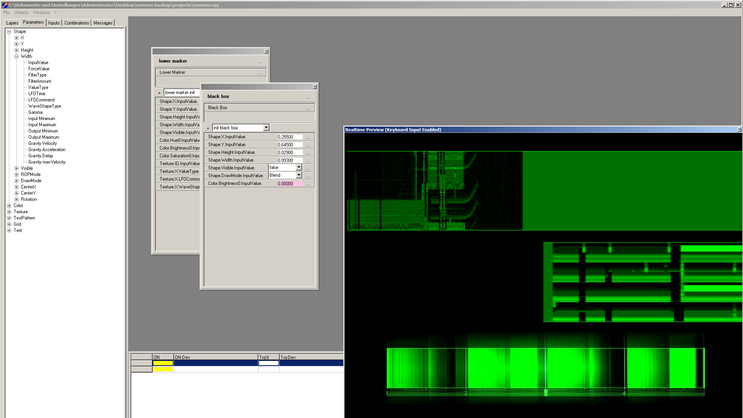
2000
Real-time effects and parameters
vvvv 2.0 consists of various high-performance graphic modules for creative expression which are parameterized by the Inspector Window. Different presets can be triggered and assigned to input channels, resulting in a semi-flexible but quite powerful system. Parameterization is done in real-time, but even slight changes in the objects require a recompile
Serious fooling around: early experiments with real-time generative graphics in different projects.
2002
Visual patches with nodes
Joreg joins the MESO team and develops vvvv 3.0 with a node-based graphical interface. He utilizes the previous render engine by Sebastian Gregor and Sebastian Oschatz.
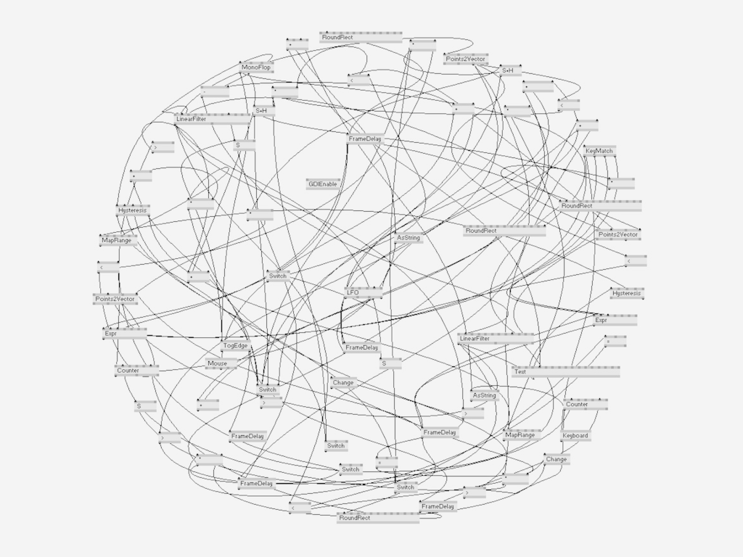
Introducing Spreads
Spreads opens up a huge potential for real-life problem solving, with smart wraparound modes in all parts of the node library. It also enables reckless experimentation while utilizing the most erroneous glitches for creative visual output.
2002
Initial public release
Off the workbench and out into the public: Roll out the red carpet,
the first vvvv forum website is launched and
vvvv 3.3 is available for public download in 2002.
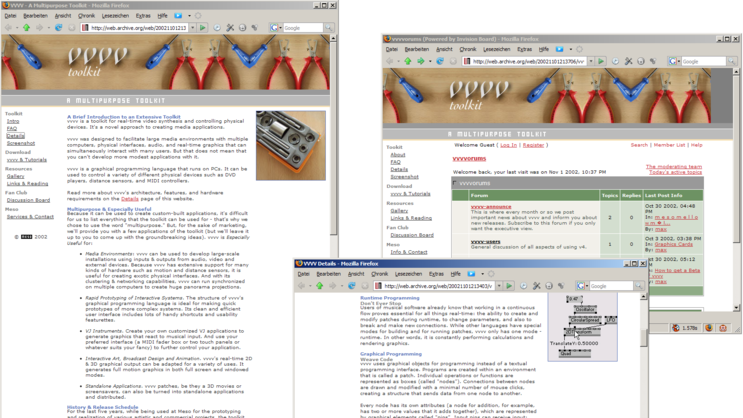
First vvvv web page in 2002, developed by Jeremy Rotzstain as part of MESO’s Explorer Program
MESO celebrates the public release with the first vvvv developers and users. VVVV is free for non-commercial use and starts attracting artists and designers worldwide.
2004
Candy for the newly-born community
Working with 3deluxe for Sven Väth’s Cocoon Club in Frankfurt poses a very unique challenge: to get high-quality, real-time rendering on a sculpted wall by means of 21 projectors. We develop the shader subsystem, one of vvvv’s most powerful features, based on Michael Mehling’s diploma thesis done while at MESO.
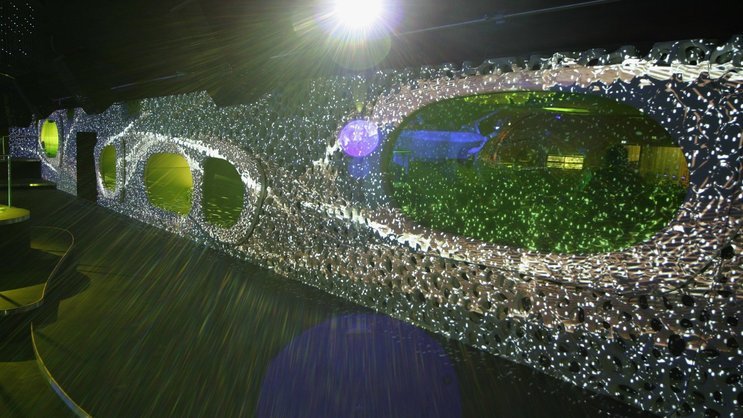
This is one of the early example patches showing the new cubemap functionality using Michael Höpfel’s 3D model of the MESO office at Niddastraße 84 in Frankfurt.
The “about” node shows all of the contributors of the vvvv core. Many of MESO’s Explorers have contributed to the core’s functionality.
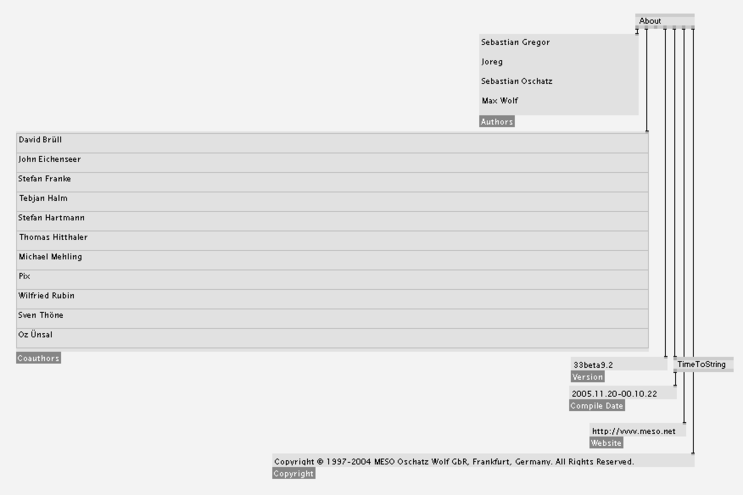
vvvv today
relentless community continues success story
A big step for MESO and the vvvv group: MESO decides to focus on its business endeavors, leaving the field to the group of volunteer developers and an ambitious community. All legal rights are handed over to the newly formed vvvv group. We are still avid users of the vvvv’s visual programming environment and continue to develop projects with vvvv.
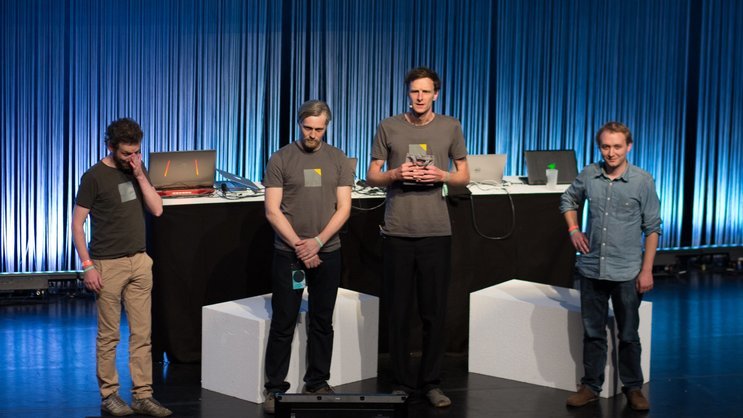
The vvvv community meets up biannually with other creative technologists, thinkers and practitioners of affiliated disciplines at NODE Forum for Digital Arts in Frankfurt, Main.
In 2017 the vvvv group presents the next tool: Visual Language (VL). VL takes vvvv one step further by creating a full fledged .NET based visual language in a real-time environment. The next generation of coders is already growing up...
NODE Forum continues to extend its workshop program for young coders and aspiring creative technologists.
The vvvv academy is founded by Dominik Koller in Berlin to spread vvvv workshops worldwide.
MESO partner Sebastian Oschatz and many members of the team continue to teach the basics of vvvv at different universities and during workshops.
The visual programming language has spread into classrooms; surely thanks to its user-friendly interface.
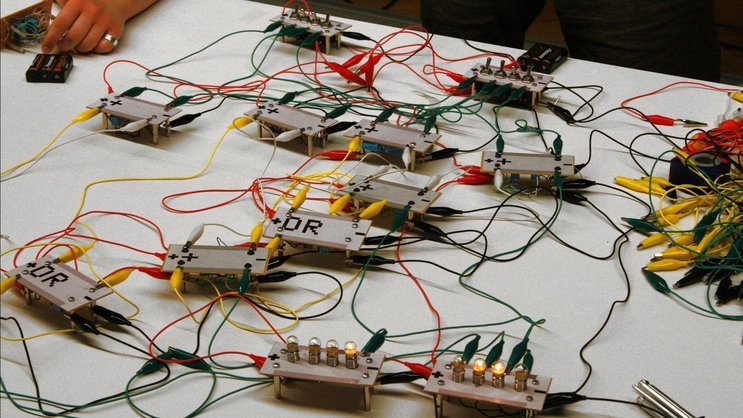
4-bit adder module by Sebastian Oschatz with students in Schwäbisch Gmünd
Educational books on vvvv have also been published in multiple languages: from hands-on tutorials to inspirational and theoretical content, vvvv has gained international popularity.


